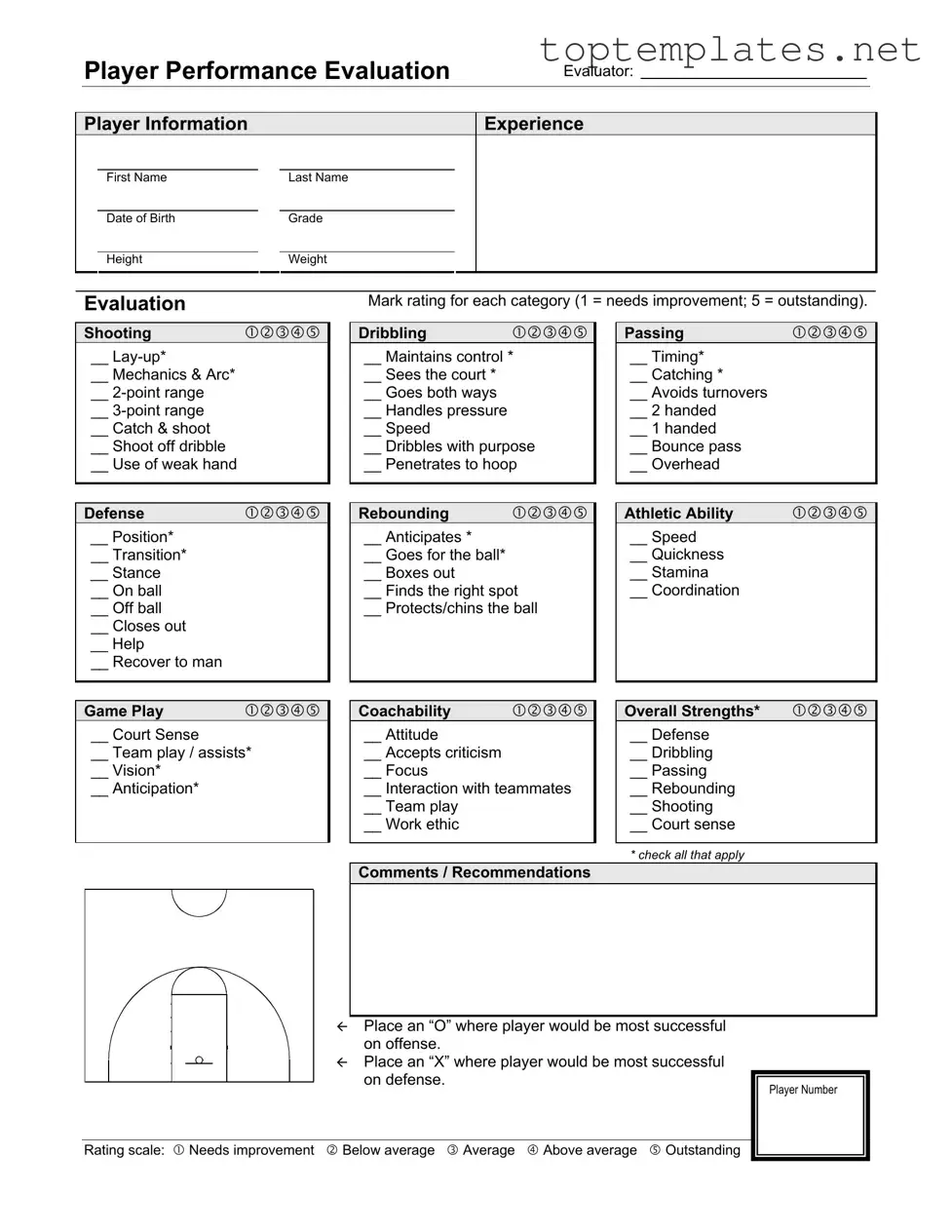What is the purpose of the Player Performance Evaluation form in basketball?
The Player Performance Evaluation form serves a crucial role in assessing a basketball player's abilities across various aspects of the game. It is designed to offer a comprehensive overview of a player's strengths and areas for improvement by evaluating their performance in shooting, defense, dribbling, rebounding, passing, athletic ability, and game play. This evaluation helps coaches and players identify key areas that require focus and development, potentially guiding training priorities and strategies for individual and team improvement. Additionally, it can aid in determining the most suitable position for a player on the court, as indicated by recommendations for where a player would be most successful on offense and defense.
How should the evaluation marks be interpreted?
The evaluation marks range from 1 to 5, with each number representing a specific level of performance: 1 indicates 'needs improvement', and 5 signifies 'outstanding'. These ratings allow evaluators to quantify a player's proficiency in each assessed category. A rating of 1 doesn't only highlight a weakness but also marks it as an area for potential growth and development. Conversely, a rating of 5 celebrates the player's excellence in a particular skill. These marks provide a clear and structured way to gauge performance, offering insights into a player's overall abilities and pinpointing specific aspects of their game that stand out, either for their excellence or for needing enhancement. Understanding these ratings is crucial for players to grasp their development areas and strengths comprehensively.
What do the starred (*) categories signify in the evaluation form?
In the evaluation form, categories marked with a star (*) are of particular importance since they represent foundational aspects of basketball that contribute significantly to a player's overall effectiveness on the court. For instance, categories like 'Lay-up', 'Position' in defense, 'Maintains control' in dribbling, 'Anticipates' in rebounding, and 'Timing' in passing are critical skills that form the core of a player's gameplay. These areas are often emphasized in training and development, as they are essential for both personal growth and the team's success. Recognizing and developing these key skills can lead to marked improvements in a player's performance during games.
How can players use the comments/recommendations section to their advantage?
The comments/recommendations section is an invaluable part of the Player Performance Evaluation form. It provides a space for evaluators to offer personalized feedback beyond numerical ratings. This feedback can include specific observations on a player's game, actionable advice for improvement, and commendations for displayed strengths. Players can use this section to gain insights into how coaches view their performance, understand the reasoning behind their ratings, and receive guidance on what aspects of their game to focus on. Constructively using this feedback can be instrumental in a player's development, helping them to set focused goals, work on their weaknesses, and further enhance their strengths.

